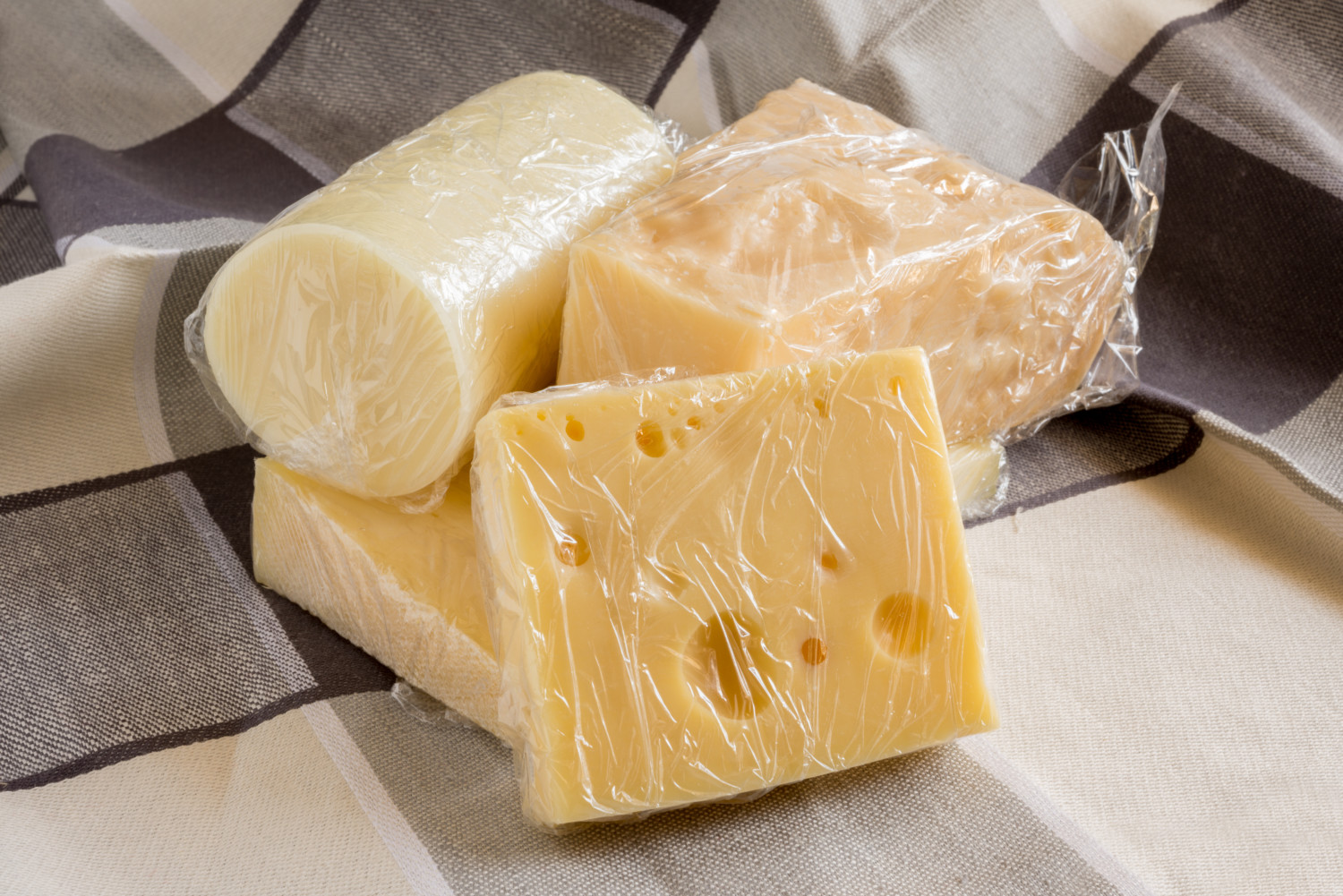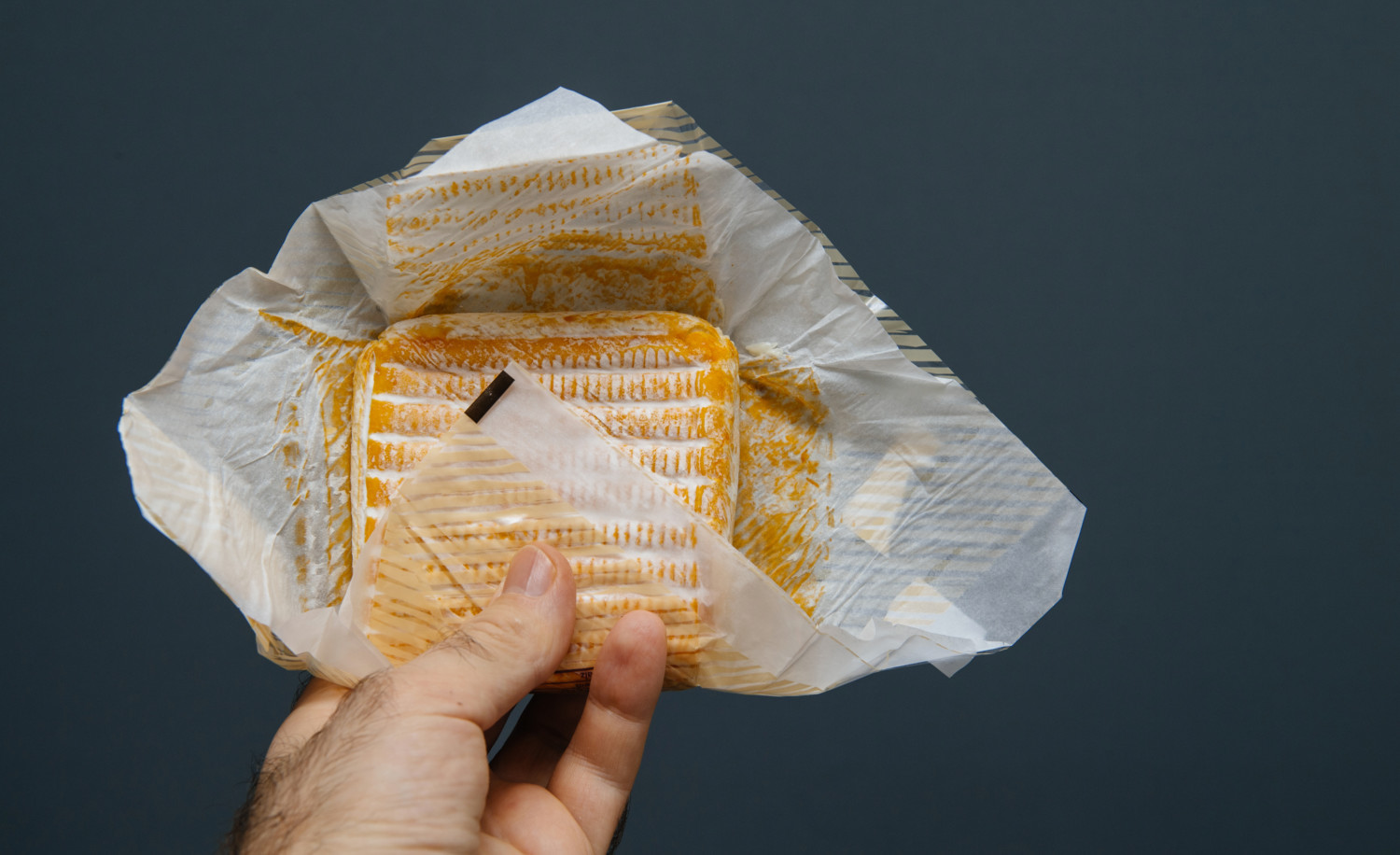The products and services mentioned below were selected independent of sales and advertising. However, Simplemost may receive a small commission from the purchase of any products or services through an affiliate link to the retailer's website.
There are around 2,000 varieties of cheese. Cheese has many unique flavors and textures, so there is virtually something for every palate. But although all cheese is made using milk, they’re not all the same.
Knowing how to store cheese properly depends mainly on how it was made and the conditions in which it matures. Some types of cheese are hard, some are soft and others are semi-soft, and they all require unique storage and handling considerations for the best results.
First, How Not To Store Cheese
Lots of cheese comes from the grocery store wrapped in plastic packaging. So it’s easy to understand why many people simply leave it in its wrapper and pop it into the fridge as is. You might even opt to rewrap an open wedge or chunk in plastic wrap from your own kitchen.
However, experts say that doing so can diminish the deliciousness of cheese.

“When cheese ripens, it gives off ammonia,” Raymond Hook, cheese expert and co-owner of Capella Cheese, a gourmet shop in Atlanta, told Southern Living. “When it is wrapped in cling wrap or film, the ammonia can’t escape, so it goes back into the cheese.”
“There’s ambient water in cheeses,” he continued. “If they’re wrapped tight, and they’re not turned or flipped, it can cause the moisture in the cheese to settle into the rind at the bottom, causing wet rind.”
The wet rind can lead to cheese that is unappetizing and even moldy. Even if you use it before mold grows, the moisture can affect the freshness and flavor.
Learn the Three Cs of Cheese Storage
The Dairy Farmers of Wisconsin, a farmer-owned and directed nonprofit organization, shares a three-word mantra to help consumers remember how to store cheese.

The three “C” words are clean, cold and covered.
- Clean refers to how cheese can absorb other flavors. Cheese is mainly made from oil and fat, so it picks up flavors quickly. Therefore, it is best to store cheese away from aromatic foods.
- Cold simply means that cheese should be refrigerated. Most stay fresh longest when kept between 34 and 38 degrees.
- Covered explains that cheese should be kept covered because it will lose flavor and moisture when exposed to air. But the organization also agrees that you should avoid wrapping cheese in plastic wrap.
How to Store Cheese
So how should you store cheese, then? Although the method can vary depending on the type of cheese, there is one product that every cheese-lover’s kitchen should have on hand. That product is cheese paper.

Cheese paper is a special, two-ply paper. The inner layer is a thin porous plastic sheet that wicks away condensation. The outer layer has a wax coating that allows adequate oxygen exchange between the cheese and the paper but prevents moisture from escaping. As a result, moisture is trapped between the two layers.
Most cheese sold in grocery stores comes wrapped in plastic. However, this wrap is only intended for short-term storage. Cheese paper is pretty affordable, but the shop you purchase it from might provide it at no charge. Just ask.
“We use plastic wrap for the cheese we put out for retail, but we’ll also cut a fresh piece off the block and wrap it in cheese paper for you if you ask,” Andy Hunt, cheesemonger at The Wine & Cheese Cask in Somerville, Massachusetts, told Epicurious. “Most good cheesemongers will do that for you.”

If you don’t have cheese paper, the next best thing is to create a double layer to cover it. Wrap the cheese in parchment or waxed paper first. Then tuck it in a plastic storage bag or loose plastic wrap. This will provide some breathability without drying out the cheese.
It’s also important to consider the variety when deciding how to store cheese.
- Hard cheeses, such as asiago or parmesan, have less moisture. While cheese paper is ideal, you can keep them in plastic wrap for short-term storage. Hard cheese can be stored for up to six weeks after opening.
- Semi-hard cheeses, like cheddar or Havarti, have a bit more moisture than hard cheeses. These should be stored in cheese paper. You can store it for about four weeks.
- Soft cheeses, such as ricotta, Brie or cream cheese, are high in moisture. Store these in clean, airtight containers, in which you can use them for about two weeks after opening.
It’s also beneficial to keep cheese in your refrigerator’s cheese drawer.
“Most cheese drawers have a setting where you can limit the airflow to the cheese,” Hook told Southern Living. “Airflow causes friction, and friction causes dehydration.”
Most cheese is best enjoyed at room temperature, so take it out of the refrigerator one to two hours before serving. Soft cheeses can only be left out at room temperature for two hours, maximum, and should be discarded if left out longer. While firmer cheese will last longer refrigerator, it is safe to eat if left out for an extended period. However, the flavor and texture can be affected if cheese is heated and cooled repeatedly.
This story originally appeared on Simplemost. Checkout Simplemost for additional stories.


